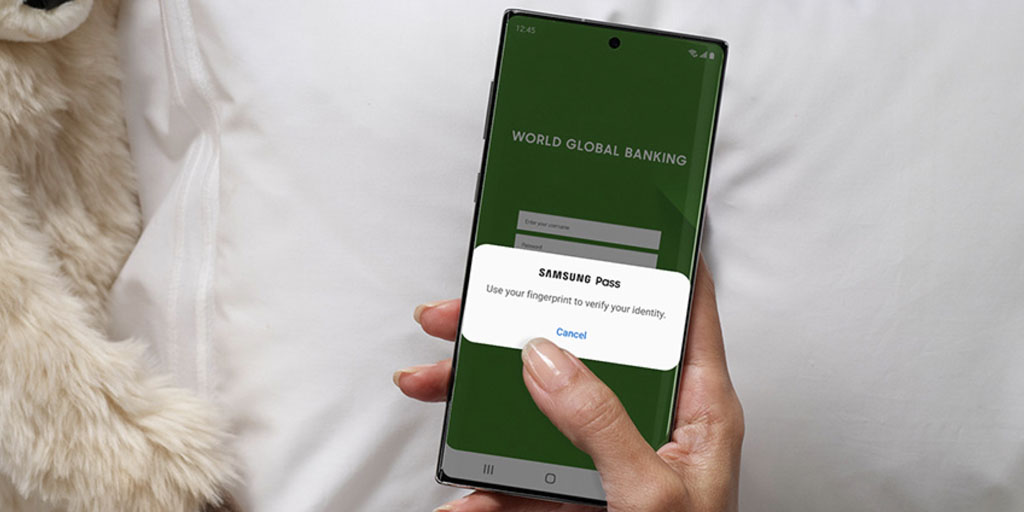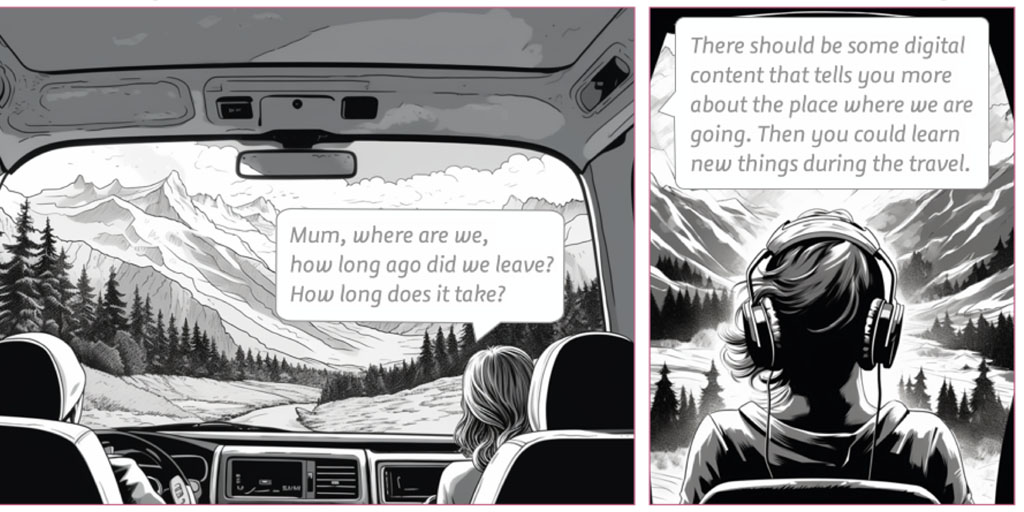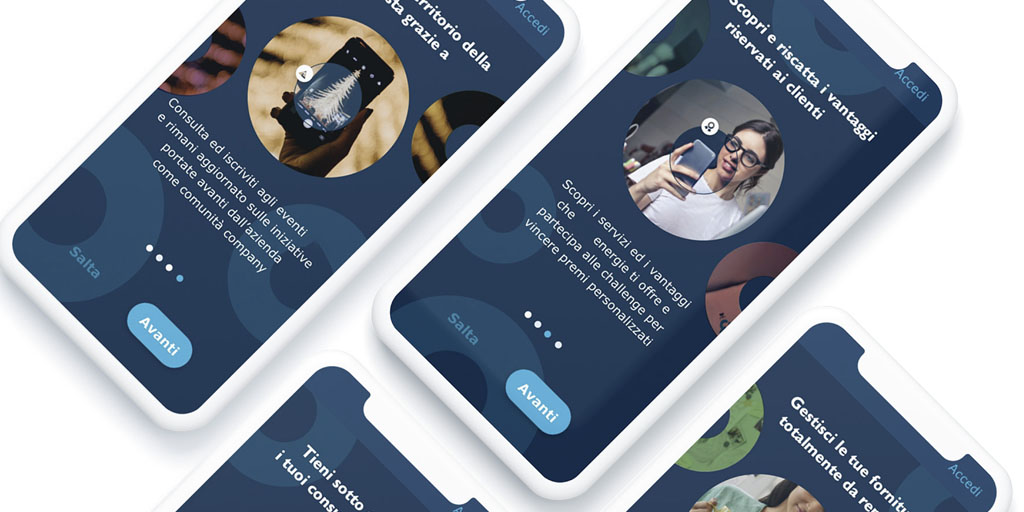Mobile Privacy UX

Mobile Privacy UX Samsung (South Korea) Share Experientia has worked for Samsung Electronics on a wide variety of projects since 2005 that covered different phases of their design process. This project was commissioned from Samsung South Korea and aimed to understand how users interpret privacy, both from a wide and narrow perspective, in order to support Samsung in the design of new privacy-related products and services. 3 things to know What users are talking about when they say “Privacy” For people privacy is an important good in itself.Privacy concerns are higher in a mobile ecosystem; to overcome this issue, companies have to rely on the trust that people grant them, and should aim to build stronger user confidence. Security and Privacy are different breeds The tech community has pushed a narrative where privacy is articulated as data security, which in turn gets translated in settings and features. This is challenging for people. Being comfortable with one’s own data What people share in the digital environment is tightly associated with the perceived risk of this action. The seriousness of risk is identified by two dimensions: the perceived distance of data disclosure consequences, and the affinity to people’s daily lives. Gallery What people share in the digital environment is tightly associated to the perceived risk of this action. How competitors address privacy Our approach Opportunity map In depth Service mix: Design thinking Ethnography Useful links: Link External link Context People who care about their privacy often feel that they are “forced” to disclose personal data, and are concerned that they don’t really know what they are really disclosing. To map this better, it’s important to start with the acknowledgement that peoples’ notions of privacy often differ significantly from how the industry and media approach this subject. Challenge Samsung asked Experientia to conduct a research to understand how users interpret privacy, in order to gain insights on users’ habits and concerns related to smartphone use, and to define UX solutions that tackle their pressing needs. Research Experientia conducted a thorough assessment of key privacy features in 3 devices. Social media listening shed light on the ongoing discussion about privacy on social media. We also interviewed users in different countries to collect a direct account of what they think privacy means for them and identify key aspects of people’s everyday life that are impacted by technology and how these aspects raise privacy safeguard concerns. The team finally engaged in conversations with experts to earn insights on broader privacy implications to add value to the research as they helped in identifying some crucial topics to discuss with users. Design Based on the fieldwork evidence, Experientia defined a privacy framework to synthesize how people address their privacy needs in the digital domain. The issues identified by researchers were re-formulated as “How might we…” questions. Experientia identified several high-level opportunities indicating possible alternative options to tackle each broader research-driven issue. Each issue with its challenge and connected recommendations was addressed by a set of opportunities indicating potential areas of intervention. Impact Experientia helped Samsung in better understanding privacy from peopler’s perspective and in defining human-centered design directions and actionable principles that could enhance the user experience addressing users’ pressing needs while simultaneously achieving two objectives: “make safe” and “feel safe”. Link External link Related projects All Services Behavioral design Research and assessment Strategy Consumer technology Buttonless: engaging users in interactions with keyless devices Brand UXConsumer technology European car aesthetics: Unveiling preferences and values Consumer technology Customer experience insights to innovation Go back to our portfolio
European car aesthetics: Unveiling preferences and values

European car aesthetics: Unveiling preferences and values Client confidential Share In a moment of transition in technology and in the use of cars, new players appear on markets with established automotive manufacturers to offer innovative solutions. But how can you understand habits, preferences and values of new customers in order to make your new solutions more attractive? An Asian automotive company asked Experientia to explore the aesthetic tastes and mobility habits of European consumers developing evidence-based market segmentation. 3 things to know Quali-quantitative study By combining these two approaches, researchers could first explore and statistically validate the aesthetic preferences and trends through a large quantitative analysis, and then gain a deeper and more detailed understanding via a focused qualitative investigation. Personas, scenarios and VLOGs Quantitative survey and qualitative interviews categorized insights by assessing participants across dimensions like aesthetic taste, innovation openness, and choice drivers resulting in 12 personas. These personas were then linked to different scenarios, enabling a deeper exploration of individual attitudes and complexities. Additionally, 4 participants create 10-minute videos showcasing city life and aesthetics of 4 European cities, providing an intimate perspective on local culture and preferences. Large scale investigation The first part of the study was conducted on a large sample of participants across 10 European countries, while the second part involved a more detailed investigation in 4 of these countries conducted by local researchers. All the investigations were carried in the native language of each country. Gallery Car scenarios Car Persona – The sporty luxury lover Car 12 Personas Car aesthetic preferences Car Personas – love nest In depth Service mix: Design thinking Service design Ethnography Useful links: Link External link Context A major Chinese auto manufacturer was looking to expand its presence in the European market. To achieve this, they have commissioned Experientia to conduct a comprehensive study that focuses on exploring evolving preferences and environmental influences that shape the future lifestyle and aesthetic trends of mature automobiles among Europeans. Challenge The objective was to achieve a comprehensive understanding of potential European customers, exploring differences rooted in demographics as encompassing cultural backgrounds and personal aesthetic values. Research The first project phase included a quantitative survey, conducted with 300 individuals each in 10 European countries The second phase comprised qualitative research involving 20 interviews with five participants from four countries, conducted in the local language and complemented with city tours to deepen understanding of local culture and environments. The survey and interviews explored users’ aesthetic preferences and daily experiences. Design The gathered data enabled valuable modeling for product design, resulting in 12 personas defined by aesthetic preferences for cars and everyday items, as well as by lifestyle, demographics, mobility and purchase habits. Six scenarios highlighted each personas’ motivations and concerns about cars, while four vlogs portrayed mobility experiences of vloggers in four cities. These vlogs served to provide an aesthetic representation of diverse neighborhoods within four European cities. The intention was to offer aesthetic evidence of the urban environments, with the specific purpose of informing the design of products that will be tailored for these markets. Impact The results will be the base to improve product offerings, and enhance marketing strategies. Link External link Related projects All Services Behavioral design Research and assessment Strategy Consumer technology Buttonless: engaging users in interactions with keyless devices Consumer technology Mobile Privacy UX Consumer technology Customer experience insights to innovation Go back to our portfolio
Retail user experience for sustainable energy service

Retail user experience for sustainable energy service Client confidential Share Understand rising customer expectations of energy providers to deliver innovative, personalized and omnichannel customer experiences for an energy company with a focus on renewable energy. 3 things to know Understand the energy market Experientia interviewed energy experts and users with different levels of experience. This allowed us to understand people’s habits, sources of information, and the online platforms currently most used. The emphasis was on sustainable and environmental developments and technologies. Identify opportunities Participatory activities with users and client allowed us to identify opportunities and outline three concepts, all considered for further development. Each of the concepts will result in a digital touchpoint for users to inform better customer decisions in the energy market by sharing tips and suggestions in matters of sustainability and energy usage. Involve users in energy saving on the local level Experientia conducted a comprehensive communication analysis to highlight the need for a coherent and defined communication strategy, with a focus on environmental and sustainable energy aspects, in order to enable a greater focus on customer-centered energy services. Gallery Energie Report In depth Service mix: Design thinking Participatory design Service design Ethnography Useful links: Link External link Context A renewable energy company wants to expand its market towards retail customers, strengthening its presence on the Italian market in a context of continuous change in the energy sector. Challenge Facing growing environmental awareness, the client aimed to better understand the retail user experience to design an attractive, updated service offering and asked Experientia for support in this challenge. Research Experientia conducted desk research on competitors’ energy services, analyzed relevant case studies and interviewed energy experts (including individuals ranging from architects, urban experts, and similar professionals) in order to shape an extensive trend research and identified strategic market opportunities for the client. These experts were carefully selected to bring diverse perspectives and insights into our research efforts. The Experientia team also conducted qualitative user interviews in order to understand (potential) customer behaviors and their gain/pain points to map and evaluate the user experience. The in-depth interviews allowed us to investigate the research question from a wide, comprehensive perspective. Model and Design Experientia utilized findings from the research to frame and define opportunities. The team conducted participatory activities to outline new design concepts. Through sharing sessions and participatory activities we validated and prioritized the opportunities emerged from the research, to develop ad hoc solutions for the client and its targeted users. In parallel, the entire research activity involved also analyzing company’s communication to identify weaknesses and opportunities to build a consistent communication strategy. Impact The results of the project allow to shape 3 main concepts linked to potential solutions to be implemented in the following phase. The team identified standard services, energy market touch-points, ideas, and best practices that inspired the design phase, working alongside with project key stakeholders to brainstorm and develop potential solutions to attract new retail customers. After thorough evaluation and consideration, the client team selected these concepts to be developed in a second of the project, now ongoing. This strategic decision demonstrates our client’s commitment to implementing innovative solutions and underscores the value of our collaborative approach in shaping the project’s future direction. Link External link Related projects All Services Behavioral design Research and assessment Strategy Brand UXConsumer technology European car aesthetics: Unveiling preferences and values Brand UXConsumer technology Mobile Privacy UX Brand UX Qualitative research on food and drink consumption to develop new consumer services Go back to our portfolio
ToNite: social innovation and urban regeneration in Turin, Italy

ToNite: social innovation and urban regeneration in Turin, Italy EU’s Urban Innovative Action Program Share ToNite is an urban renewal project which aims to develop multidisciplinary solutions to manage public spaces and improve residents’ perception of security at night-time along the Dora River of Turin, Italy. 3 things to know Design ethnography and service design Experientia explored the current culture of security – with a focus on night-time – in two different areas along the Dora River through the involvement of key stakeholders, local communities and citizens. The ethnographic research consisted of in-depth interviews, explorative urban walks and an online questionnaire. Co-design with communities During different phases of the project, citizens were given the opportunity to co-define solutions to improve social cohesion and the perception of night-time security and liveability of public spaces. Develop a human-centered approach to data modeling Evidence from research on the culture and perception of security was used to inform the design of the technology infrastructure that supported the City of Turin on related topics and defined a call for innovative local social impact projects. Gallery Video https://youtu.be/m7EpFn8RZJ8?si=7iWAp3KUGBcdV1lNhttps://youtu.be/eV2wwPIay0Y?si=JIWahAXLsptvIxMG In depth Service mix: Design thinking Policy development Participatory design Service design Ethnography Useful links: Download the report Italian language Link to ToNite website About the project Context Urban Innovative Actions (UIA) is a Program of the European Union that provides urban areas throughout Europe with resources to test new and unproven solutions to address urban challenges. Although research on urban issues is well developed, potential solutions are not always put into practice because urban authorities are reluctant to use their money to test new, unproven, and hence risky ideas. Urban Innovative Actions offers urban authorities the possibility to take a risk and experiment with the most innovative and creative solutions. The main objective of UIA is to provide urban areas throughout Europe with resources to test innovative solutions to the main urban challenges, and see how these work in practice and respond to the complexity of real life. ToNite was a 3-year project. It ran in the 2019-2023 timeframe. Challenge The City of Turin, together with a range of partners including Experientia, participated in the 2019 call and won a €4.6 million grant with a project called ToNite. ToNite sought to create urban regeneration and to address urban blight and decline in selected areas along the Dora River through collaborative policies based on social empowerment, active participation of residents and stakeholders, and social and technological innovation. The main project partner was the Municipality of Turin. Other partners were: Fondazione Piemonte Innova, SocialFare, Engineering, the European Forum for Urban Security, Espereal Technologies and ANCI (the National Italian Association of Municipalities). Research Experientia was particularly engaged in activating communities in exploration activities, defining areas of opportunities and requirements to facilitate civic empowerment and technology-based social sensing. This allowed the City of Turin to implement multidisciplinary and co-designed solutions to improve the livability of public spaces and the perceived security of our communities. Experientia conducted ethnographic and social enquiry activities in target neighborhoods, engaged key stakeholders to understand the current culture of security (with specific focus on the night-time experience), and defined 33 new opportunities for the City. More than 500 residents were involved in the project exploration phase. Both qualitative and quantitative research methods were adopted, including 36 in-depth interviews, 5 exploratory urban walks, and an online questionnaire. Research outputs were strategic in informing subsequent project phases. Both Opportunity Mapping and Persona Modelling were used to guide co-design processes for innovative and impact-oriented services for the target area. Design We supported project partners in working with communities to co-design opportunities for urban regeneration and services to improve social cohesion and the perception of security and liveability of public spaces at night-time. The results led the City of Turin in defining a call for innovative social impact projects. 19 impact-oriented and sustainable projects were funded and supported by dedicated acceleration programmes. Insights from our qualitative inquiry with citizens and city representatives also helped the team in developing an improved and integrated technology infrastructure to understand and analyze urban insecurity phenomena and to provide overall intelligence. Within the acceleration programme conducted by different partners, Experientia supported the projects in developing their service model with dedicated sessions and service design tools, delivering 19 Service Blueprints. The analysis of the overall ecosystem led to the co-definition of strategic guidelines for the City of Turin regarding the areas of intervention and priorities to develop and maintain a service ecosystem. Impact ToNite contributed to the physical regeneration of the Dora River, providing new urban furniture and regenerating unused spaces located in the area. The project intervened in two different areas along the Dora River with the aim was to understand and improve residents’ perception of night-time security and livability. The collaborative bottom-up process applied highlighted interventions, actions and services and models for residents and innovators. Download the report Italian language Link to ToNite website About the project Related projects All Services Behavioral design Research and assessment Strategy Social innovation Turin Public Libraries, redesigning the cultural experience Social innovation COE, Strengthening access to justice through non-judicial redress mechanisms HealthSocial innovation Singapore: a city for people aging gracefully Go back to our portfolio

